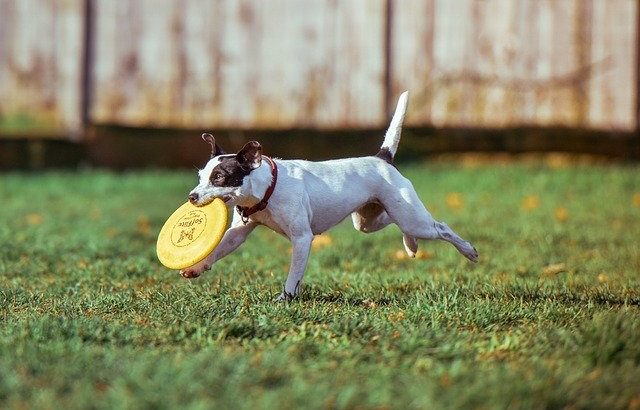The Important Role of Technology In Veterinary Clinics
Veterinary clinics have improved their ability to diagnose and treat medical conditions in animals thanks to technology. Technology is something that defines us as humans. It encompasses skills, processes and methodologies that help us achieve objectives. All businesses use technology in their operations, and veterinary clinics are no exception. How do veterinary clinics use technology exactly?
In-House Analyses
Technology allows veterinary clinics to perform in-house analyses. To diagnose an illness in an animal, a veterinarian may analyze the animal’s blood or tissue. The veterinarian may determine the animal is suffering from a parasite, or perhaps the animal is suffering from anemia. In the past, analyses such as this were typically performed at laboratories. Most veterinary clinics today, however, have their own laboratory equipment to support basic analyses.
Radiology
When an animal is believed to be suffering from an internal injury or illness, technology in the form of radiology be used for diagnosis. Radiology refers to imaging technology. Veterinarians use it to create three-dimensional images of animals’ organs, tissues and bones. Many veterinary clinics have magnetic resonance imaging (MRI) machines. As the name suggests, MRI machines use a magnetic field that travels through an animals’ body. These magnetic waves are then converted into three-dimensional images.
MRI isn’t the only form of radiology used in veterinary clinics. Others include computed tomography (CT), ultrasound and X-ray. There are nuances between them, but they are all designed to look into an animal’s body. Veterinary clinics have high-tech radiology equipment that allows them to quickly and effectively diagnose internal injuries and illnesses in their clients’ animals.
Laser Surgery
Technological advancements have paved the way for new surgical methods in the veterinary industry, including laser. Laser surgery doesn’t require the use of a scalpel. It involves the use of a laser. There are CO2 lasers, for example, that can perform a myriad of surgery processes, such as incisions, ablation and vaporization. Many veterinary clinics use CO2 lasers to perform surgery on their clients’ animals.
Laser surgery has become a popular alternative to traditional scalpel-based surgery. It’s typically more precise and accurate. Further, laser surgery automatically seals capillaries to stop blood loss. While the technology has been around for several decades, laser surgery has just recently gained momentum in the veterinary medicine industry. Nonetheless, there are now thousands of veterinary clinics that offer laser surgery.
Laparoscopic Surgery
In addition to laser surgery, many veterinary clinics now perform laparoscopic surgery. Laparoscopy is a minimally invasive form of surgery that involves the aid of a small camera. During laparoscopic surgery, a veterinarian will make a small incision on the animal. The veterinarian will then insert a small camera through the incision and into the animal. By viewing a monitor connected to the camera, the veterinarian can find and navigate to the appropriate part of the animal’s body.
Laparoscopic surgery offers several advantages. For starters, it’s less invasive than traditional surgery. It generally only requires a single small incision, whereas traditional surgery may require one or more larger incisions. Treated animals also recover more quickly from laparoscopic surgery.

3D-Printed Prostheses
Some veterinary clinics are equipped with state-of-the-art 3D printing machines, allowing them to produce customized prostheses for their clients’ animals. Some animals are born without a limp, whereas others may sustain an injury that results in the loss of a limb. Using a 3D printing machine, veterinarians can produce an artificial limb that’s customized specifically for the animal. 3D printing isn’t as common in the veterinary medicine industry as the other technologies described here. As 3D printing machines become more affordable, though, more and more clinics are using them.
Administrative Tasks
Technology even helps veterinary clinics perform administrative tasks. A veterinary clinic is a type of business, and like most businesses, they must manage their sales and financing. Veterinary clinics use computers and software for these and other administrative tasks. Most of them also use software for scheduling purposes. When a client makes an appointment, the veterinary clinic will add it to the scheduling software.
Reuniting Lost Animals
Veterinary clinics use technology to prevent lost and runaway animals. According to the American Society for the Prevention of Cruelty to Animals (ASPCA), U.S. animal shelters pick up over 6.5 million pets each year. It’s undoubtedly heartbreaking for an owner to lose his or her pet, but veterinarians are working to reunite them.
How do veterinary clinics reunite lost pets with their animals? Well, many of them offer microchipping services. During this service, a veterinarian will implant a small transponder chip into an animal’s skin. The chip is about the size of a single grain of rice. It contains information about the animal as well as the owner’s contact information. If the animal gets picked up by a shelter or animal control services, they can read the chip to find the animal’s owner.

